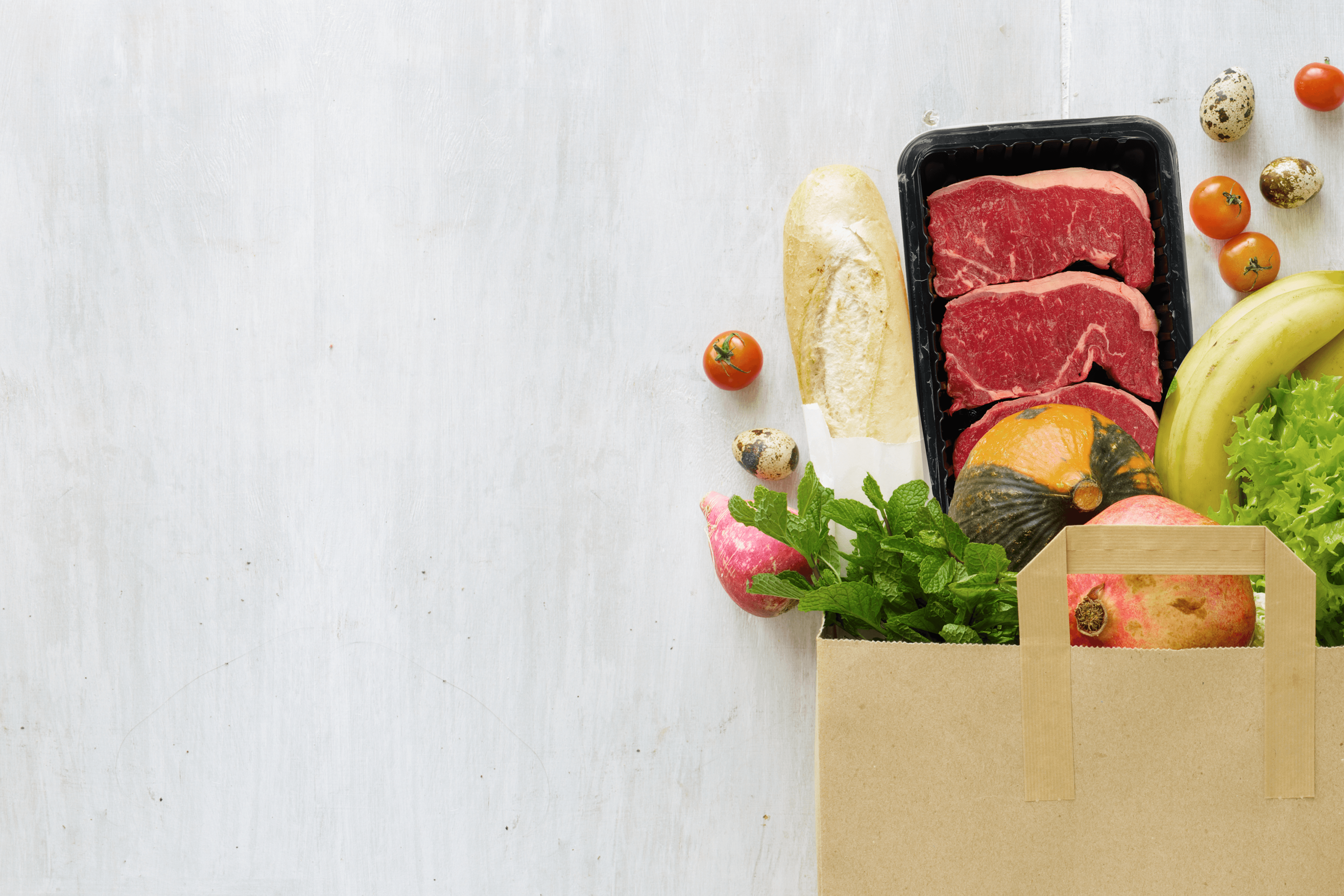
Food Storage
The importance of storing and arranging food properly is to easily find the required food items and ingredients when searching for them, but most importantly, proper storage ensures food safety. So, storage should be handled seriously. Here are some practical food storage tips:
Different date labels on products explaining how long they will last can be confusing and, many times, lead us to throw away good food that could otherwise have been consumed. Indeed, the problem is endemic! To put things into perspective, a UK report showed that Britons throw away 3 million tonnes of food per year before they ever get to cook it. In Saudi Arabia, a study conducted by the Ministry of Agriculture showed that Saudis waste $35 million worth of food every day. One can only imagine how much food, money and effort a single family can save if they rethink their food consumption and waste – part of which includes learning about date labels and food storage.
Check our guide below to understand what different date labels on products exactly mean:

The "best before" end date (which means "best eaten before date ...") often indicates product quality and not how safe it is to eat. Products with this type of validity date may be taken up after the date referred to as Best Before without health damage. However, it is important to note that the product may not have the same quality or flavor as before. For eggs, the product can be taken one or two days after the "Best Before" shelf life date provided that the eggs are well cooked.

Similarly, the end dates referred to are either "Display until" ... or "Sell by" (which means "sold until date ...") are dates intended for market or grocery workers, not the consumer . You can ignore these dates.

Be careful! End dates referred to as "Used By" mean food safety, meaning that the product should not be taken after that date even if it appears to be sound and smelling. This is particularly true when you do not intend to freeze the product (see next paragraph). Also, the storage instructions on the package must be followed.

As noted above, foods with the validity dates referred to as "used by" must be taken before the date recorded. However, if you wish to extend the shelf life of this type of product (eg, poultry or meat) beyond the "used by" date, you can do so by placing it in the frozen on any day before that date. After that you can use the product whenever you like, it is removed from the frozen only to melt, with the reminder to take into account the use within 24 hours.

Make it a rule to set your fridge’s temperature between 0°C and 5°C. If your fridge does not accurately show you the temperature, you can buy a fridge thermometer from a homeware store. Also, minimize your door-opening times to ensure your fridge stays cool. It is hard to believe how much food we waste without noticing simply because our fridges are not set on the right temperature. A research in UK showed that the fridge temperatures of 70% of people in the UK are set at around 7°C, leading to shorter shelf-life for some products – especially milk.

Always keep the manufacturer’s packaging for fruits and vegetables, even if you are tempted to save space in the fridge or make it neater. Remember, companies worry for their reputation and hence design their packaging so that the food retains its quality for longer. Only remove the packaging when you will eat or cook the food. More importantly, packaging labels contain nutritional information that is vital if you have family members with medical conditions that require delicate attention or special diet considerations.

Do not overcrowd food in your fridge. In fact, organize food in a way that allows air to circulate around it ensuring it stays cool.

Always use airtight containers to store in the fridge those foods that are constantly used throughout the day, such as Arabic dates and nawashif (Arab foods which are ‘dry’ in that they do not contain sauce or gravy, e.g., light snack deli selections and dips such as hummus, cheese, pickles, olives and luncheon meats – e.g., sausages, or chicken mortadella cold cuts). It is also best to divide each of these products in two airtight containers: one half to be used immediately and the other to be used later to preserve the quality of dates, cheese, pickles, olives and luncheon meats for longer periods.

Food that is likely to rot quickly such as meat, fish, milk or leftover cooked food should go immediately into the fridge. In the case of cooked food, ensure it cools down before putting it in the fridge.
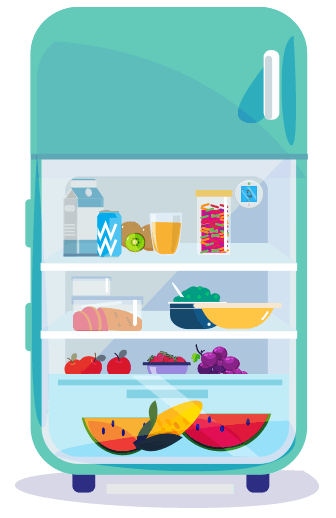

Be a decisive decision-maker. If you feel something will not be eaten before it starts to lose its quality, then simply freeze it any time up until the ‘use by’ date. This way, you lose nothing because whenever you need the product, you can simply defrost it and use it within 24 hours.

It goes without saying that raw and cooked foods – especially raw meat – should be stored separately to avoid having bacteria transfer from the raw to cooked foods.

Fridge Drawers: Salads, vegetable and fruit should be stored in the drawers so they stay fresher for longer. As mentioned earlier, do not remove the packaging of fruits and vegetables as they help preserve them.

Top shelf: Pastries, eggs and general produce can be stored on the top shelf, which is the warmest shelf of the fridge.

Second shelf: Cooked meats should be placed in the shelf above raw meat and fish. Dairy products like cheese and milk should be stored alongside cooked meats in the second shelf and not in the fridge door.

Third shelf: Raw meat, poultry and fish need to be kept in the coldest shelf of the fridge, which is the last shelf usually above the vegetable drawers. They also need to be covered properly in clean, airtight containers to protect their quality and also to prevent them from touching or dripping onto other foods and contaminating them.
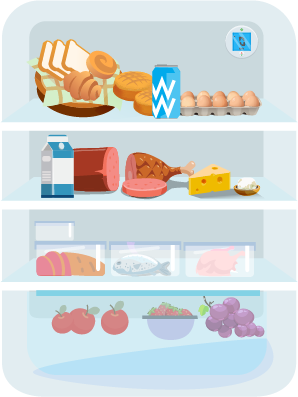
Investing in a good, reasonably-sized freezer is a great idea. Freezers let us enjoy the food we buy for a longer time – saving us money, time and effort. This is even more essential for larger families, which are common in Saudi Arabia. If distant family members are in town and decide to pop in for a visit, you will find that your ready-made dishes and pastries will be such a saviour. During the holy month of Ramadan, there is no doubt the freezer will be your best friend. Here are some generally important tips when it comes to freezing food:

Surprisingly, you can freeze almost everything including milk, raw eggs, fruits, chilies, potatoes, bread, cooked meat and even cheese (with the exception of soft cheese). Check our storage tips for freezing vegetables, fruits, bread and meat and dairy.

You can store food in the freezer any day up to its ‘use-by’ date. Once the food is frozen, it can go beyond its expiry date since the freezer will play the role of a pause button. Actually, in theory, you can freeze food safely for years, though its quality of taste and texture will begin to deteriorate after 3 months from its freeze date. As such, try not freeze food for longer than three months.
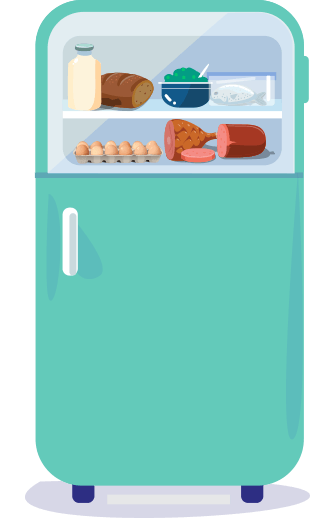

Divide food into one-to-two portion sizes before you freeze them, and avoid freezing servings of larger size. For one, your food will both freeze and defrost faster. Secondly, it is convenient for times when you only need to use a small portion, e.g., for a guest or a single family member who has specific dietary requirements, or when you need a quick-fix lunch to take to work. You can easily defrost just the amount you need without wasting a full portion of food.

Wrapping food properly for the freezer will prevent ice crystals from forming and save the food from getting freezer burns. Thus, wrapping ensures you do not throw away your food due to poor taste or quality. Use plastic containers with airtight lids for liquids and semi-solid foods such as casseroles. For smaller freezers, you can freeze things in containers or trays, and once frozen, move them to specialized ‘freezer bags’. Investing in bags designed specifically for freezing will go a long way in retaining the quality of your food. Using shallow take-away trays or multipurpose plastic cling film for firmer foods can also save you space.

As time goes by, we may forget when we stored a certain food in the freezer. In fact, at times, we might not be even able to identify certain frozen food (e.g., milk, raw eggs or sauces). Thus, labeling food that goes into the freezer is very important. Neglecting proper labelling may lead to throwing food away in vain. Write the name of the food, the quantity/portions and the date of freezing. To avoid having the labels come off or the writing being smudged due to moisture, invest in freezer labels and a good marker pen that are suitable for the freezer.

For defrosting, follow the instructions below:
For safer defrosting, make it a habit to thaw frozen food in the fridge overnight rather than putting food out on the kitchen counter to thaw quickly the day you need it. This is especially important considering Saudi Arabia’s warm weather.
Remember to account for excess water due to the defrosting process. Thus, place frozen food in a container in the fridge to prevent ice from dripping onto other food and contaminating it.
Use defrosted food within 24 hours and make sure you cook it thoroughly until steaming hot.
If you are in a hurry and need to defrost the food as soon as possible, then defrost it quickly and safely in the microwave.
Avoid unnecessary and unwanted thawing. For example, if you buy frozen food from the supermarket, you should head home straightaway and place it in the freezer. In the car, try to keep frozen food as cool as possible; avoid placing them in the car trunk – which would be particularly warm in Saudi Arabia’s weather. One good idea is to use cooler boxes (such as those used for picnics) to keep the frozen food as cold as possible until you reach home.
These are general tips on how to use date labels, the fridge and the freezer to understand and prolong the life of various foods. Get more specific tips on how best to store particular foods for long-lasting quality and life.
In the warm climate of Saudi Arabia, keeping your fresh produce on a vegetable rack will shorten their ‘freshness lifespan’ and more likely lead to their waste. Instead, make it a rule to store most vegetables in the fridge in a loosely tied plastic bag so they last longer and retain their freshness. This can include vegetables such as broccoli, carrots, peppers, tomatoes, lemons, cauliflower and mushrooms (keep mushrooms in paper bags).
The exceptions are potatoes and onions as they need to be kept in a cool, dark and dry place, not in the fridge. Potatoes in particular can develop chemical changes, green colouration and grow sprouts as a result of exposure to natural or artificial light. The British National Health Service (NHS) advises against eating any green or sprouting parts of potatoes. You can still easily cut the green bits to preserve the potato.
To keep your green leaves fresh, store them in a jar of cold water in the fridge. Watercress in particular can be placed upside down in a bowl of water and kept in the fridge.

Since drinking red tea with mint leaves is a custom in Saudi Arabia, it is important to preserve the freshness of mint. To ensure your mint stays fresh for as long as can be, rinse it clean under running water, thoroughly dry the leaves, then store in the fridge in a plastic container layered with kitchen towels so that the moisture released from the leaves can be absorbed – leaving them dry and fresh. Another way to preserve mint leaves is ‘sun drying’ them. Simply rinse and dry the mint and then tie it with a rubber band and hang upside down in the garden or in a room with good air circulation. You can also just pop the mint herbs in a warm oven of 80˚C (180˚F) for 3-4 hours with the oven door slightly open to allow any moisture to escape. Dried mint in tea or salads tastes just as rich as fresh.
A good way to prolong a lettuce’s freshness is to remove its plastic wrapping, dispose of any slightly brown leaves and wash the lettuce and drain. Then, soak a tea towel in cool water and wring it out. Finally, wrap the lettuce in the towel and store in the fridge. This will keep the lettuce fresh for quite some time.

Afraid those fresh herbs in your fridge will wilt soon and may end in waste? Chop them up, sprinkle into ice cube trays, top with water, and put in the freezer. Once frozen, the cubes can be gathered into ziplock bags. Next time you make any dishes, soups or stews, don’t forget to add your herb cubes.


If there are any herbs you usually use together such as coriander mixed with garlic, mint, parsley, chives or tarragon, then you can chop them up and keep them in freezing bags. Store for up to six months. In addition, big batches of spinach can be chopped, boiled and frozen in bags so they are at hand whenever you want to make those spinach pastries or add to casseroles.

Fresh ginger is not on friendly terms with the fridge since it dries it up. Instead, cut fresh ginger into manageable chunks, peel, and freeze in a bag. Not only will your ginger stay fresh, but it’s also much easier to grate when frozen.

Are your mushrooms wrinkling? Just chop them up, moisturize in melted butter, and freeze. Your mushrooms are now ready for pizzas, stews, and oven casseroles.

A common cooking difficulty in Ramadan is the mess created after making the classic onion and tomato sauce (kushnah), a staple ingredient in most Arabic dishes. Instead of wasting time and effort every day to make the sauce from scratch and dealing with the messy aftermath, just make a very big pot of it in the month before Ramadan. Once the sauce has cooled, start portioning it out into small bags counting two bags for each day. When Ramadan comes around, simply take out the number of bags you need for your soup, kabsah (a traditional Saudi dish of meat and rice) or pizza and drop its contents in the pot to thaw. Not only does this save time, but you’re also sure to use those tomatoes, garlic and fresh herbs while they’re still fresh.

To avoid potatoes becoming green or parsnips rotting, simply parboil (partly boil) then spread them on a tray to freeze in a single layer. Once frozen, pack into bags and label, indicating the freezing date. Potatoes can safely be frozen indefinitely, but set an expiry date of maximum 12 months for best quality. To maintain quality, ensure to store at a temperature of -17˚C (0˚F) without any thawing cycles, and exclude any air from the bags. You can cook them straight from the freezer but allow an extra 10-15 minutes of cooking before serving them with steaks or roasted chicken.
We tend to habitually place our freshly bought fruits in our nice looking fruit bowl. But remember, fruit bowls should not be confused for decoration! To cut down fruit waste and preserve their quality, make it a rule to store most fruits in the fridge – such as apples, oranges, grapes, kiwis, pears, berries and strawberries. Additionally, keep them in the fridge in a loosely tied plastic bag to prevent them from shriveling up. Only prior to eating do you add them to the fruit bowl so they can level back to room temperature in order to taste their true sweetness.
In the case of watermelon in particular, cut it into cubes and store in containers in the fridge. If you do not want to cut it, then make sure to keep the melon in the fridge and wrap the exposed side (i.e., the juicy red part) with a plastic wrap to prevent it from absorbing other flavours in the fridge and keep it in good shape for up to a week.
The exceptions to the above list of fruits are bananas and whole pineapples – not pineapple slices – which need to be kept in the fruit bowl in a dark, cool place.

Bananas, if kept in the fridge, will blacken. So store them at room temperature. Additionally, if you keep bananas in a bag they will stay firmer and look better for at least a few days. Also, do not place other fruits, especially if they’re already ripe, around bananas for too long as bananas release natural ethylene gas which may ripen neighbouring fruits much quicker than needed.
Whole pineapples should not be stored in the fridge but at room temperature. If ripe, then store it in room temperature for only 3 days. On the other hand, peeled pineapple slices can be cut and stored in the fridge in airtight containers – ideally in the top level since it is less cold – and should be eaten very soon.
If you buy hard avocadoes (or any other hard fruit), store them by the kitchen windowsill so they ripen up until they become like butter at room temperature. A trick to speed up the ripening process is to put the avocado in a paper bag or dark drawer with a banana. The natural ethylene gas produced by bananas will help its neighbouring fruits to ripen up quickly. The same goes for any other stiff fruits that were harvested a bit too early.
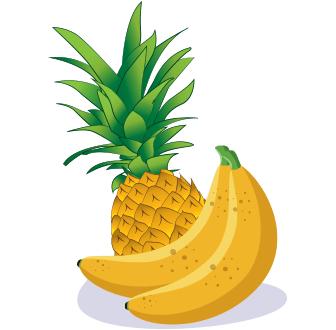
If your family is a fan of apple cakes or applesauce then you can freeze some apples from time to time. Just cut apples into slices and cook them in boiling water. Spread the layers in a tray and place in the freezer. Once frozen, pack layers into a bag and use whenever needed.


Do not throw bananas when they go brown. This is your chance to store them for a future banana cake, loaf or smoothie! Simply peel the bananas and store them in the freezer. You can also bake them in the oven, top up with a bit of honey and enjoy – whether by themselves or in combination with ice-cream or other desserts.

Strawberries, while not the best-looking fruit after being frozen, can still be frozen by placing them individually on a tray then packing them in a bag once firm. You can use them in ice creams, trifles and soufflés.

A healthy idea for the family, especially in Ramadan when juices are popular, is to blend strawberries, mangoes or guava in a food processor with 2-3 tablespoons of sugar (or no sugar) and then freeze the mixture in bags. This way, whenever you want to have fresh juice, just cut some slices of your frozen fruit puree, add water and blend. This idea is also useful whenever an unexpected guest arrives and you have no fresh juice in the fridge.
Store bread in fairly cool, dark and dry places. A breadbox or a cupboard allocated for bread will do.
Storing bread in the fridge (not freezer) is not preferable. So only do so if the weather is very hot, which is the case in the majority of Saudi Arabia’s cities in the summer. However, make sure to take the bread out of the fridge an hour before serving so it can soften up again.
One old trick to freshen-up a day’s old pita bread (Arabic khubz) is to sprinkle it with water on both sides and pop it into the toaster. If you don’t have a toaster then place a metal baking rack on the stove and lay the bread on it to reheat quickly.
Likewise, bread rolls or loaves can be brought back to life by soaking them under running water then reheating them in a moderately heated oven for about 10 minutes until they turn crispy on the outside, soft in the inside.

Most bread types can be stored in the freezer easily giving you no excuse for throwing away any bread because it is rotten. So, buy different types of bread in a reasonably good amount. This way you can use half immediately while storing the other half in the freezer on the day of purchase or at any time up to the ‘Best Before’ date. Frozen bread will rescue you when you suddenly cannot find someone to run to the store to buy bread. (Not to mention, every visit to the store risks buying things you might not need.)
Pitta bread (or Arabic khubz) is an excellent candidate for freezing. All you have to do is pop it in the toaster. Use it straight away for hot fillings, or leave it to cool for a sandwich. The same goes for fresh bagels where you can slice them, freeze, and later just pop into the toaster

When it comes to meat, poultry and seafood always take extra care with storage and packaging guidance and instructions. If you want to extend the life of food beyond its date, freeze before the “Use By” or “Best Before” dates. Make it the norm to defrost meat or poultry by placing it in the fridge overnight rather than leaving it on the counter and use thawed meat within 24 hours.
Leftover fish should always be wrapped properly and chilled in the fridge. Aim to eat it within a day of cooking, no longer than that.
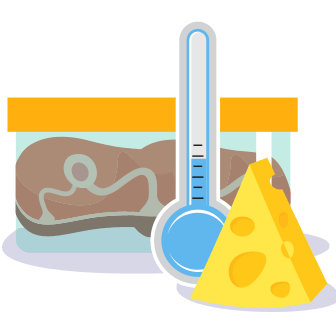
Dairy products are pasteurized to kill harmful bacteria and make dairy products safe to drink or eat. Thus, it is important to keep dairy products in the fridge in a temperature below 5°C (40°F) to prevent any growth of bacteria. To ensure that your dairy products are kept in a healthy condition and are not wasted in vain, always store dairy products, especially milk, inside the fridge’s shelves instead of the door shelves where products are exposed to warmer air. Moreover, given the Kingdom’s warm weather, take extra precautions when shopping by making dairy products (and meat) the last things you place in your trolley and drive from the supermarket straight to home.
Hard or moist cheese should be stored in airtight containers in the fridge. Blue cheese can be wrapped in tin foil. When you have leftover cheese, yoghurt or milk, store them separately and consume within two days. Don’t return the dairy leftovers back into the original containers. This ensures that if the leftover are spoiled they don’t waste the rest of your product, or more importantly, contaminate it.
Don't wash your meat or chicken! The British National Health Service warns people against washing meat and chicken as it only spreads germs and bacteria around utensils, the sink and kitchen surfaces, thus significantly increasing the risk of food poisoning. Just place the meat and chicken straight into the pot and thoroughly cook to ensure killing any germs.

You can prepare, though with care, some of your meat and chicken breasts in advance by cutting them into strips or cubes and then freezing them. This will help you on those busy days to prepare quick meals such as stir-fries, meat or chicken casseroles.

For many working mums and indeed in Ramadan’s daily hectic routine of cooking, freezing ready-cooked ground beef is bliss. Just make sure to cook the beef on the day of purchase and freeze directly after cooking. You should place the meat in freezer bags that are usually thicker than regular plastic bags, seal tight and label. Remember, making the bags flat saves space and also speeds up the freezing and thawing processes. Frozen pre-cooked ground beef will give you convenient access to making a variety of recipes such as spaghetti sauces, meat pastries, kababs, meatballs, hamburgers and most of all, ground beef for those Ramadan sambusas!


Eggs can be frozen successfully for 4-5 weeks, but not in their shells. Instead beat yolks and whites together to freeze whole eggs, place the mixture in a container and label the date and number of eggs. You can also freeze egg yolks or whites separately but don’t forget to label the number of eggs, especially with egg whites! This is a great idea whenever you’re stuck with that odd egg white or yolk that cannot be included in another recipe. Later, thaw the eggs naturally and use as normal in omelets, scrambled eggs or other sweet and savoury dishes.

If you are cooking a certain recipe that requires separating tender raw meat or poultry from the bones, then don’t throw the bones because they will make you the best stock for soups and stews. Just freeze them and make your stock at some later point.